Imagining the Unimaginable at Auschwitz-Birkenau
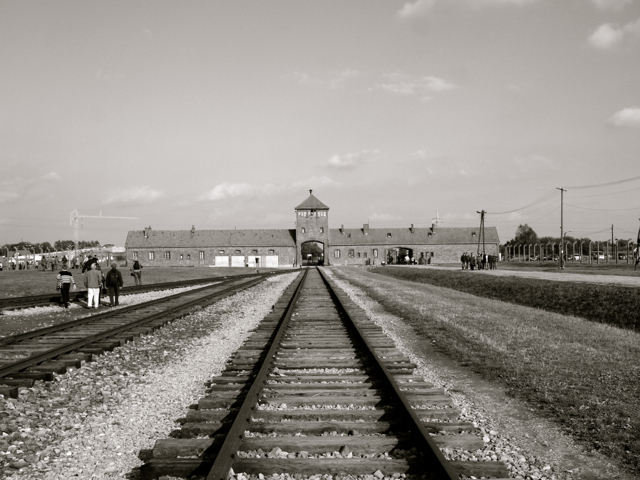
The sun was shining brightly that day in Oświęcim; a chilly but blue-skied September afternoon in southern Poland.
It would have been beautiful — if it hadn't felt so wrong.
The sun isn't supposed to shine at Auschwitz.
As I waited uneasily for my tour of Auschwitz I (the main base camp at the Auschwitz complex) in that bright sun, I secretly willed it to go away. Fluffy clouds and saturated colors just felt wrong in a place that holds so much darkness. But shine away it did, and I found myself realizing that, during the 4 years that Auschwitz operated as a concentration and death camp, there would have been many sunny days. Just like this one.
It was the first thought of many that day that simultaneously chilled my bones and made me want to cry.
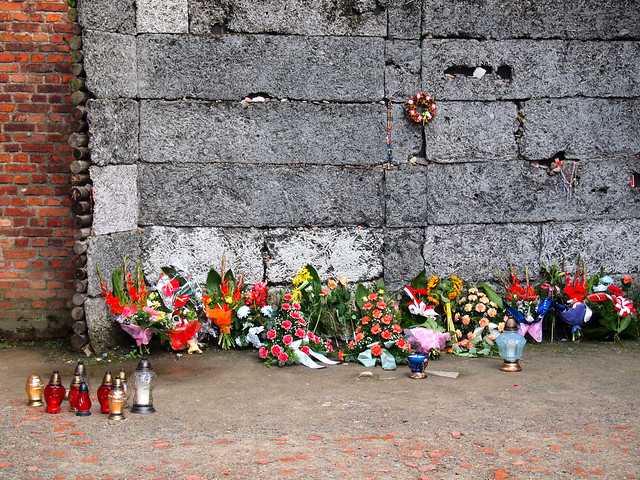
I've been told that understanding the Holocaust and why it happened just isn't possible. “You can't apply normal logic to the Nazis,” a tour guide in Berlin once told me. “If you can understand why the Nazis did what they did… well then I would worry about you.”
And it's true. Imagining what happened at these camps is nearly impossible. How can a person comprehend anything at all while standing in a spot where a million people were murdered for no good reason?
It all just seemed unreal.

At Auschwitz I, you are guided through buildings set up museum-style. Maps. Photos. Prison cells. Stories of people who became numbers. It didn't truly hit me, though, until we got to the part of the camp I just referred to as “The Rooms.”
The Room of Hair. The Room of Abandoned Luggage. The Room of Children's Shoes.
By the time we got to The Room of Children's Clothing (which also displayed haunting photos of skeletal children at Auschwitz), I knew tears were streaming down my face. And yet I could barely feel them. I could barely feel anything.
People often tell you that visiting such a devastatingly dark place makes you feel numb. But I didn't believe it until I experienced it for myself. The lack of logic, sense, or even basic human-ness makes a place like Auschwitz impossible to fully grasp, especially when you are there, staring the reality — and the proof — in the face.
As we exited the museum portion of the complex, our guide told us to take a closer look at the mugshot-style photos that lined the walls. Each showed a prisoner in white-and-black-striped clothing, beneath which was a name, the date the person arrived at the camp, and the date they died.
Very few of them survived at Auschwitz for more than 9 months.
When I took the bus over to Auschwitz II-Birkenau, the numbness continued. As did that infernal sunshine.
It shone down on me as I visited the barracks-style cabins that the prisoners were piled into.
Mocked me as I stood at the end of the railroad tracks where families were rent apart, many headed straight for the gas chambers.
Made me want to cry as I stood staring, soggy-eyed, at the rubble of the massive gas chambers/crematoriums that the Nazis hastily tried to destroy at the end of the war in order to erase evidence of their atrocities.
And did nothing to warm me up as we heard stories of Nazi guards telling prisoners to “remember where you put your clothes and shoes so you can find them after your shower” before ushering them into those gas chambers to kill them with Zyklon B, burn their bodies, and dump the ashes into small ponds nearby.
Numb, numb, numb.
And far too sunny.
In his will, Hitler blamed the whole of WWII — including the Holocaust — on the Jews. On the people he was systematically exterminating. No, there is no logic there; no sense to be made of it. He was a madman who somehow convinced people to follow him.
It's crazy, because, in the beginning, the “Final Solution to the Jewish Problem” did not include murdering anybody. Himmler, Hitler's right-hand man when it came to torture and evil ideas, actually suggested deporting all the “undesirables” to Madagascar. Just get them out of Europe.
But, somewhere along the way, the plans took a dark turn.
It began in 1939 with a program called Aktion T4, which lasted for 2 years and marked the first time in modern history that a government began murdering its own citizens based on what it considered to be genetic inferiority. Aktion T4 focused mostly on mentally ill people in Germany, with doctors “assisting” them in being euthanized. Eventually, though, Hitler turned his sights to gypsies, homosexuals, and especially the Jews.
Hitler came to power in January 1933; by June of that year, he passed laws against Jews holding authoritative jobs and going to schools with others. In 1935, the Nuremberg Laws were passed. These were anti-Semitic laws that set curfews and banned relationships between “Aryans” and “non-Aryans.” In 1938 the Night of Broken Glass took place, during which Jewish shops across Germany were ransacked and Jewish families were chased from their homes.
And then the concentration camps began. Followed not long after by the death camps like Auschwitz.
Auschwitz was actually a complex of 3 separate camps — Auschwitz I (the base camp), Auschwitz II-Birkenau (the extermination camp), and Auschwitz III- Monowitz (a labor camp). Auschwitz I began operation in 1940, with Auschwitz II following the next year. It is this second camp that most people are familiar with.
We all learned about the Holocaust in grade school. We read Anne Frank's diary and Elie Wiesel's “Night.” We heard tales of Hitler and the SS and the horrors that took place at concentration camps across Europe. But when you are actually standing there, in front of ruined gas chambers that took the lives of roughly ONE MILLION people?
That is not something you can learn from a textbook, or comprehend when you are hearing about it from half a world away.
Visiting a place like Auschwitz is not a pleasant experience. I can totally understand those people who will likely never visit a concentration camp because of how depressing they are. BUT, I also feel that visiting places like this — facing the reality of them — is important. It helps us recognize the cruelty inherent in the human race.
And hopefully helps us understand how important it is to never let something like this happen again.
Today, Auschwitz is a listed UNESCO World Heritage Site and also a museum. Visiting the site is meant to be educational, and I highly recommend it if you find yourself in the area.
Opening hours —
- 8:00 AM – 3:00 PM December through February
- 8:00 AM – 4:00 PM March, November
- 8:00 AM – 5:00 PM April, October
- 8:00 AM – 6:00 PM May, September
- 8:00 AM – 7:00 PM June, July, August
Getting there — Auschwitz is located on the outskirts of Oświęcim. It can be reached via train and then bus (or you can always hire a driver from a nearby larger city like Krakow). In between the 2 parts of the camp that visitors can see (Auschwitz I and Auschwitz II-Birkenau) a free shuttle bus runs every 15 minutes or so.
Guided tours — All groups are required to tour the museum part of Auschwitz with a guide, and guides are recommended for individuals, too, especially at Auschwitz I. (I went with a guide, and though the group was quite large, I learned a lot more than I would have had I just been wandering around on my own. Once we got to Auschwitz II-Birkenau, however, I went off on my own.)
Pricing — For any language that isn't Polish, guided tours of the whole site (Auschwitz I and Auschwitz II-Birkenau) run 40 PLN ($13.15 USD) for regular tickets and 30 PLN ($10 USD) for students. There is also a 4 PLN ($1.30) fee for headset rental, which is required for the guided tours of Auschwitz I.
Take your time — It's recommended to allow at least 3-4 hours at Auschwitz (at least 90 minutes apiece for the guided tour of Auschwitz I and visiting Auschwitz II-Birkenau).
Would you ever visit a “dark” place like Auschwitz?
*Thanks to Krakow Tourism, who set up my visit to Auschwitz.

Amanda Williams is the award-winning blogger behind A Dangerous Business Travel Blog. She has traveled to more than 60 countries on 6 continents from her home base in Ohio, specializing in experiential and thoughtful travel through the US, Europe, and rest of the world. Amanda only shares tips based on her personal experiences and places she's actually traveled!

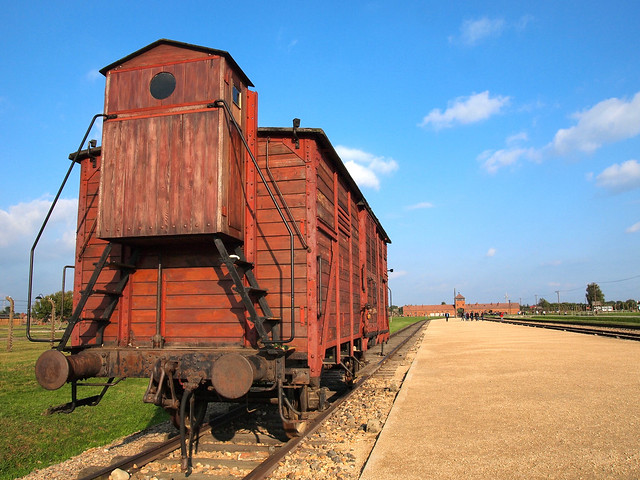
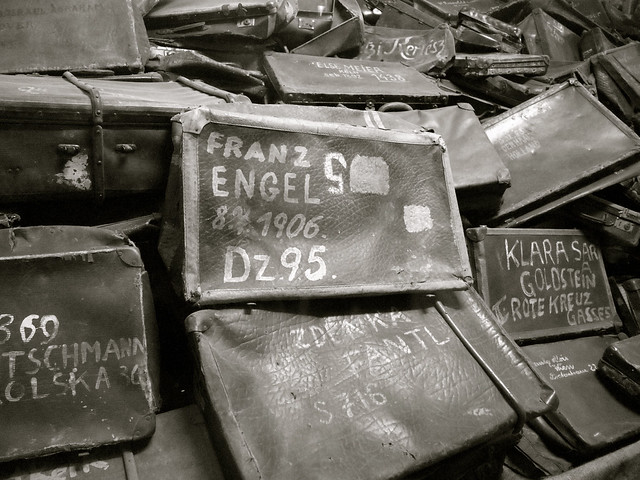
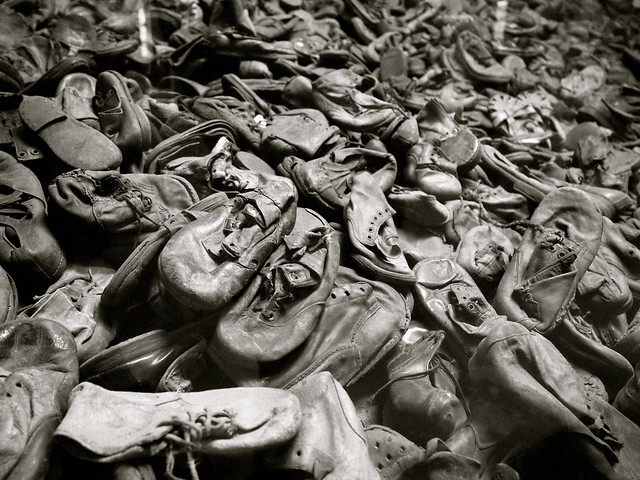


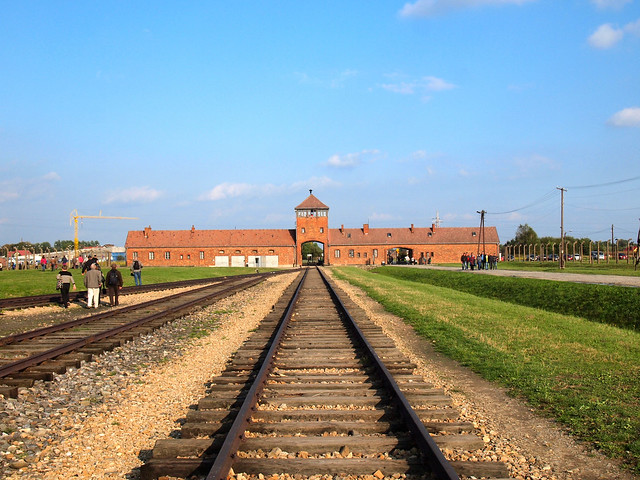
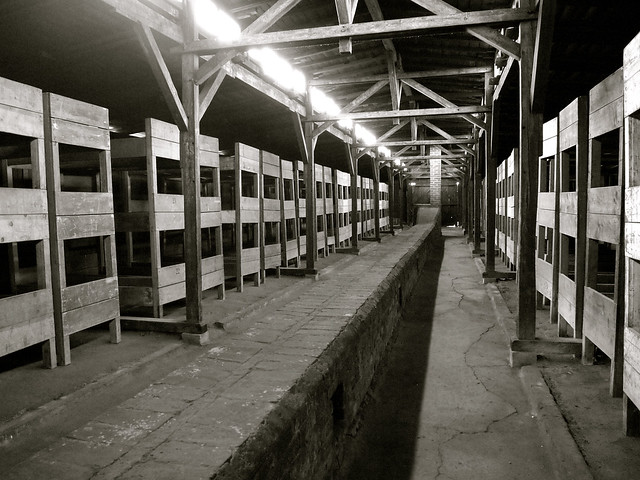

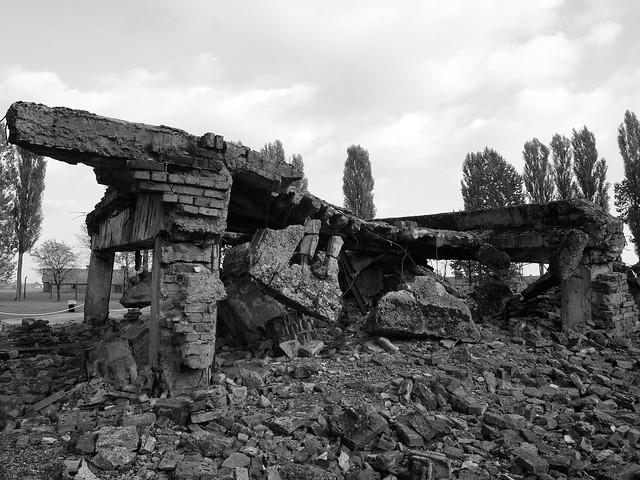
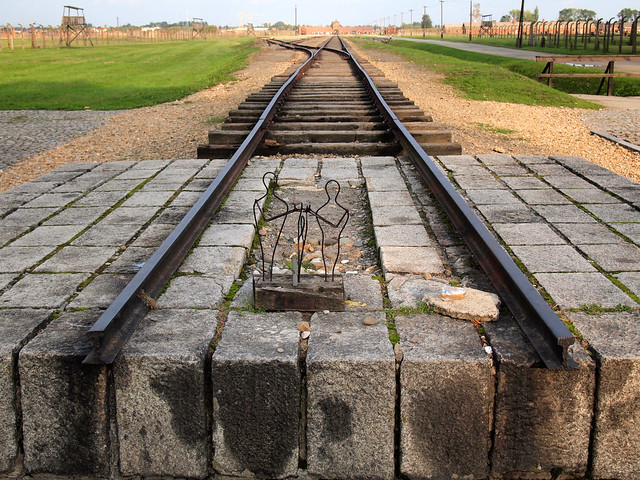
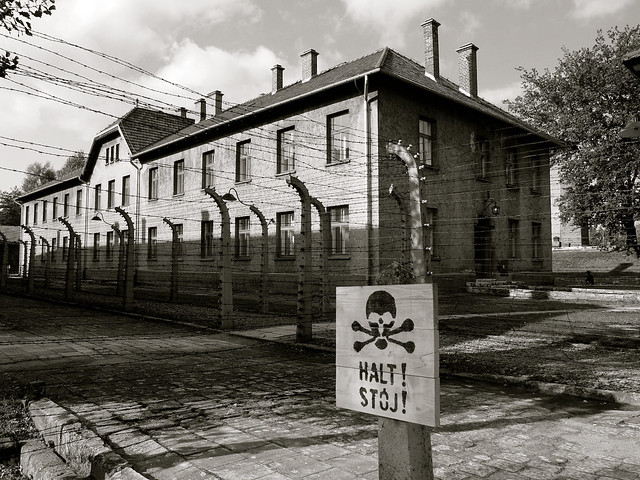

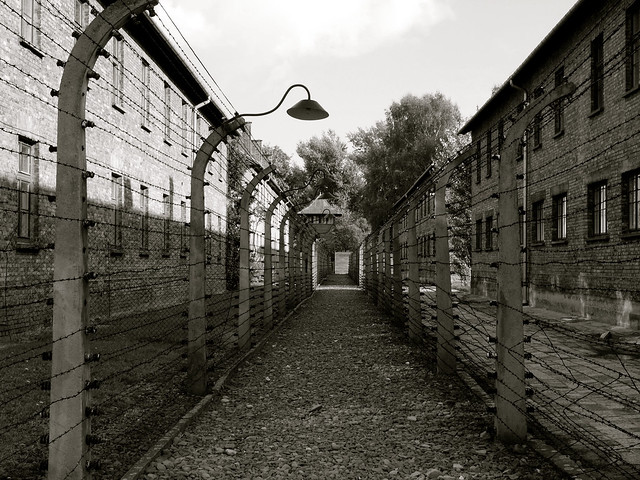
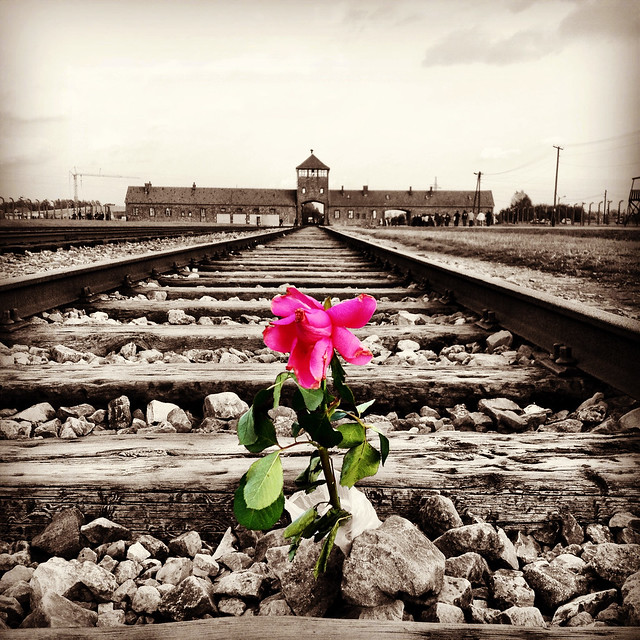









Just came across this article from your Facebook post…the one about the anniversary of liberation for this camp. Thank you for sharing your experience, I almost feel as though I have been there myself. I am planning to go there this year, and being Polish myself I expect it will be one of the most overwhelming experiences of my life, but one I feel needs to be had.
I’m glad you found this post, Jenna – it was a very difficult one to write, but it’s one of the pieces I’m most proud of on my site. It definitely WILL be overwhelming when you visit, but I agree that you definitely should go at least once if you’re able to.
[…] Auschwitz-Birkenau in Poland (2013) […]
I went to the Dachau camp when I was fourteen. I had family who were there. I have seen Schindler’s List and could never watch again. It is too painful for me. I agree we need these movies and places to make sure humanity never forgets, but I know personally I never will and don’t revisit something if it hurts my heart that much. I say that, but I might not be able to pass up a chance to visit if I ever go to Poland. I have family there and hope to visit the country one day. I am scared and it is painful to think about. It is painful just reading your post, but you did a good job.
Concentration camps are incredibly difficult to visit. I know I would probably never go to Auschwitz again – once was necessary, but also enough.
Thank you for your post. I’m visiting krakow and will be traveling alone. I am considering visiting and wondered if you have any advice on taking a private tour vs visiting alone. Thank you.
Hey Kennedy! I assume you mean visiting Auschwitz on your own or on a tour? I went on my own. You actually HAVE to take a group tour through the first part of the Auschwitz site, though, so you’ll just be put in a group once you get there. It’s definitely worth seeing. I’m sure you could book a group or private tour from Krakow, though, too, if you would prefer that. But you definitely don’t need to.
I want to visit Auschwitz. I think its one of those places everyone should try and visit. We have to learn from the mistakes of the past so that we dont repeat them. Sadly memorials seem to be the only way to do that. I visited the Holocaust Museum in Dallas. When you walk into the museum that have these pillars that show how many people had died and its so hard to fathom how anyone could do that to their fellow man.
It’s a very difficult place to visit, but I agree that it’s important to go if you can. You really don’t understand the full extent of what happened to these people until you are there, seeing evidence of it first-hand.
[…] all learn about the Holocaust in school; about how horrible and evil it was. But I don’t remember learning nearly as much […]
[…] For four years during the 1970s, Cambodia experienced a devastating genocide, during which more than 1/3 of the country’s population was systematically murdered. There are many “killing fields” all over Cambodia, but the most well-known is near Phnom Penh. Visiting was very sad and quite chilling (especially when our guide was pointing out bits of bone and human teeth that are still surfacing from the mass graves), but I think it’s important to subject yourself to history like this. […]
I posted earlier on this. If I were to arrange a trip to Auschwitz, what are some other major attractions to not miss in a short trip (~ 2 weeks max) to eastern europe in this vicinity? I presume Berlin, Warsaw, Prague? Haven’t read all of your posts but of the ones I’ve seen recently, you have the exact low down on travel I need. Thanks!
There’s a LOT to see in this part of Europe – I wouldn’t recommend stuffing it all into 2 weeks, though! I would suggest Krakow (the closest city to Auschwitz and the top destination in Poland), a trip to the salt mines, Warsaw, and perhaps one other city. That city could be Berlin or Prague, or you could go somewhere else in Poland. Gdansk is also supposed to be lovely.
Appreciate your advice, as always!
Fantastic entry… Reading this brings back some strong memories. I haven’t been to Auschwitz, but I’ve been to Dachau and Neuengamme. Even going the second time, to Neuengamme, it doesn’t get any easier. The camps just feel otherwordly and wrong. And the numbness and silence that just hangs over the places is intense.
It’s stunning to see the size and scope of an individual camp and then to think that there were many others at least as large, all operating with the same intent” forced labor and extermination…
I don’t think I’ll ever go to another camp like this. I know it would never get easier or make any more sense. I AM glad I went to Auschwitz, though – it’s important to come face-to-face with places like this.
Very well written Amanda.
In Belgian we have the Fortress of Breendonk. I’ve thought of visiting often, but I haven’t been yet.
Somehow it feels wrong to do this as a day trip in the weekend.
It feels like it should get a special planning or something.
Have you ever been to the Jewish Museum in Berlin?
I’m sure it’s nothing in comparison with Auschwitz, but it sure made me quiet.
I’ll be visiting the Anne Frank House in Amsterdam on Wednesday.
One thing is sure: we have to keep writing about this. People have to remember that this can never happen again.
I did not go to the Jewish Museum in Berlin, but I did visit the free museum beneath the Holocaust memorial. It was a really sobering place, too. But nothing compared to actually visiting Auschwitz.
I agree with you, though – we really do have to keep writing about these places!
[…] >> Read more about my emotional visit to Auschwitz. […]
I’ve wanted to go all of my life. I’m now age 62 and time is limited. What’s the easiest and cheapest way to get there from New York?
You should do it! You can fly from New York to Krakow (usually with a stop somewhere in Germany) and then book a tour to Auschwitz from there. Obviously the prices would depend on the time of year you’re going, with winter being the cheapest and summer probably being the most expensive.
Thanks so much, Amanda! I love following all of your travel spots, but this one in particular was very important to me.
– @westr
I have not been to Auschwitz yet but I am sure I will go one day. I am drawn to places like this for some reason. It may be a bit morbid going to memorials but I feel like I am honouring all those that were murdered and mistreated by doing so. I also want to understand why and how it happened, but as you said, this isn’t possible. A beautifully and poignantly written piece, complimented by excellent photos. Thank you.
Some people might think it’s morbid – but I totally understand where you’re coming from. I’m the same way.
I remember watching the movie in high school. It did seem to be dark and gloomy because it was in black and white. I would love to pay my respects to all those who died for no reason if I am ever in the area. Your article was well written and must have been hard to write!
It was sure not easy to write, Angela. But thanks for the compliments.
I am originally from Poland and I’ve been to Auschwitz several times. I think everybody should see it – once. The stories are incredible and the museum makes you get the goosebumps.
I agree with you – it’s definitely a place everyone should visit at least once if they can.